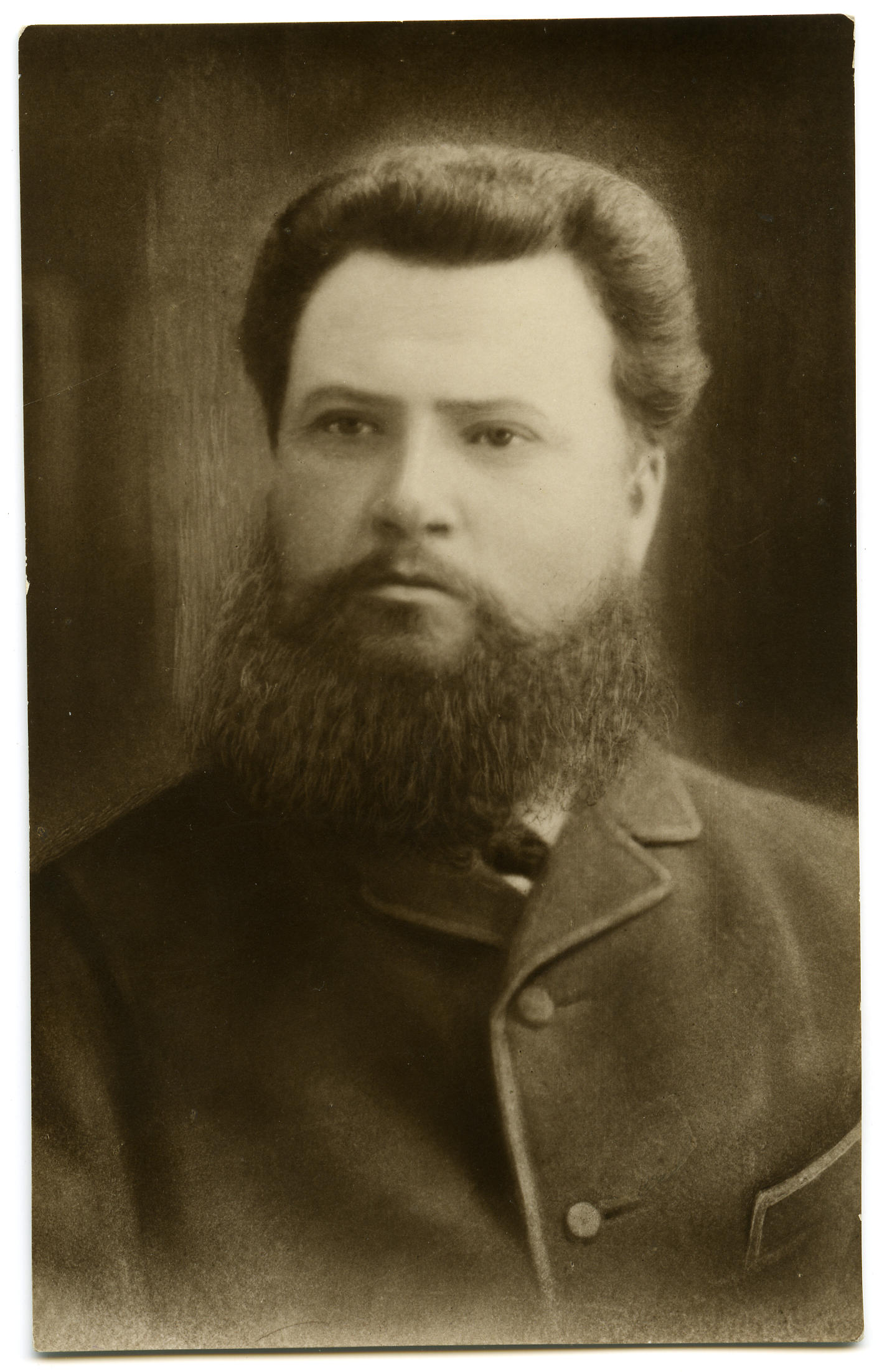
Juhan Kunder
Juhan (Johann) Kunder (26.XII 1852 – 24. IV 1888) was an Estonian writer poet and teacher, folklore collector, literary historian and public figure.
He was born at Kovali farm in Holstre parish in Viljandimaa county, the son of a farmer. He attended Pulleritsu village school, Paistu parish school, Viljandi primary and county schools, and from 1872 to 1875 Tartu Teachers’ Seminary. Later he passed the county school teachers’ examination. From 1873 he belonged to the Estonian Students’ Society. He was also a member of the Society of Estonian Men of Letters, and from 1882 to 1888 was its deputy president. He was active in the Alexander School movement, and actively collected folklore. Kunder’s mentor was Mihkel Veske.
Kunder collaborated on the newspapers Eesti Postimees, Sakala and Valgus, and from 1885 to 1886 edited the literary weekly Meelejahutaja, which under his editorship played a large part in developing the Estonian literary canon. The reviews in it were later published as a separate book. At first it concentrated on analysing verse, later on introducing the great figures of the Awakening period. The influence of Koidula is reflected in Kunder’s poems and plays.
From 1876 to 1886 he lived and worked as a teacher in Rakvere. Before that he was a teacher for a year or so in Tartu. He compiled nature-study textbooks and readers, wrote plays and poetry (patriotic, nature and love poems), translated from other languages and wrote literary criticism. He also edited Part I of C. R. Jakobson’s Kooli Lugemise Raamat (‘School Reading Book’). One of his best-known poems is Munamäel (‘On Munamägi Mountain’), which was set to music by K. A. Hermann.
Kunder was among the first theoreticians of children’s literature, who gave lectures on the subject and brought several tales based on folk traditions to children, such as Ahjualune (‘The Creature under the Stove’), Suur Peeter ja Väike Peeter (‘Big Peter and Little Peter’), Vaeslaps ja talutütar (‘The Orphan and the Farmer’s Daughter’), which are still well-known and republished today. The children’s books he created have been translated into many languages. He himself translated Jonathan Swift’s Gulliver’s Travels into Estonian.
In 1886 he went to study natural sciences at Kazan University and thereafter to St. Petersburg, where he died of typhus aged 35. Kunder is buried in Rakvere cemetery.
Streets have been named after him in Rakvere and Tallinn, as well as an erratic boulder on the slopes of Suur-Munamägi hill. There is also a monument to Juhan Kunder in Rakvere, and a memorial stone at his birthplace. The Juhan Kunder Society, which operates at his birthplace in Rakvere makes the Juhan Kunder Spirituality Award.
M. K. (Translated by C. M.)
Books in Estonian
Fairy tales and other pieces for children
Laste raamat. Rakvere: 1884, 46 lk.
Lu’ud lastele. 1.-2. Tartu: H. Laakmann, 1885, 1888, 16+16 lk.
Eesti muinasjutud. Korjanud ja ülesse kirjutanud J. Kunder. Tartu: Eesti Kirjameeste Selts, 1885, 160 lk. [Järgnevad trükid: 1924, 2007 (publikatsioon internetis, kommenteeritud väljaanne, kättesaadav: http://www.folklore.ee/UTfolkl/mj/kunder/index.html).]
Ahjualune. Tallinn: Eesti Raamat, 1970, 24 lk. [Järgnevad trükid: 1985, 2010.]
Suur Peeter ja Väike Peeter. Tallinn: Eesti Kirjastus, 1944, 19 lk. [Järgnevad trükid: 1963, 1986, 2000, 2014, 2016.]
Karistatud uudishimu. Tallinn: Ilukirjandus ja Kunst, 1946, 16 lk.
Südi sõsar. Tallinn: Ilukirjandus ja Kunst, 1946, 16 lk. [2. trükk: 1971.]
Imelik peegel. Tallinn: Eesti Riiklik Kirjastus, 1953, 65 lk. [Järgnevad trükid: 1975, 1987, 2002, 2010, 2015, 2018.]
Vaeslaps ja talutütar. Tallinn: Eesti Raamat, 1969, 16 lk. [2. trükk: 2017.]
Juhan Kunder, Friedrich Reinhold Kreutzwald, Rehepapilood. Tallinn: Perioodika, 1988, 47 lk.
Juhan Kunder, Friedrich Reinhold Kreutzwald, Jutte vaeslapsest. Tallinn: Perioodika, 1990, 32 lk.
Juhan Kunder, August Jakobson, Loomade loomisest. Tallinn: Perioodika, 1993, 32 lk.
Juhan Kunder, Matthias Johann Eisen, Tark kuningatütar. Tallinn: Ilo, 2010, 16 lk.
Poems
Õie-kuu ja külm elu maanteel. 1. pärg. Luuletanud J. C. Tartu: 1873, 20 lk. [Kättesaadav: http://hdl.handle.net/10062/7996.]
J. C., Kümme laulu. Tartu: C. Mattiesen, 1876, 12 lk. [Kättesaadav: http://hdl.handle.net/10062/7995.]
J. Kunder’i Algupäralised luuletused. Tartu: 1889, 56 lk. [Kättesaadav: http://hdl.handle.net/10062/8003.]
Drama
Mulgi mõistus ja Tartlase tarkus. Nali ühes järgus. Tartu: Schnakenburg, 1881, 26 lk. [Järgnevad trükid: 1906, 1914, 1994.]
Muru Miku meelehaigus. Nali ühes järgus. Eesti näitemängu sõbradele. Tartu: Schnakenburg, 1882, 31 lk. [Järgnevad trükid: 1885, 1994.]
Kroonu onu. Nali kahes näituses. Tartu: H. Laakmann, 1885, 79 lk. [Järgnevad trükid: 1905, 1909, 1922, 1954, 1971.]
Mõrsja ja Märatsejad. Kolmejauline näitemäng. Tartu: H. Laakmann, 1887, 100 lk. [2. trükk: 1994.]
Kingu Laos. Ajapäraline näitemäng kahes järgus. Viljandi: 1890, 52 lk. [2. trükk: 1994.]
Näidendid. Koostanud Külli Laugaste. Tartu: TÜ Kirjastus, 1994, 131 lk. [Sisu: ‘Muru Miku meelehaigus’, ‘Mõrsja ja märatsejad’, ‘Vallavanema valimine’, ‘Kingu Laos’, ‘Mulgi mõistus ja tartlase tarkus’, ‘Vorst’ (J.Kunderi jutukese järgi dramatiseerinud A.Rennit).]



